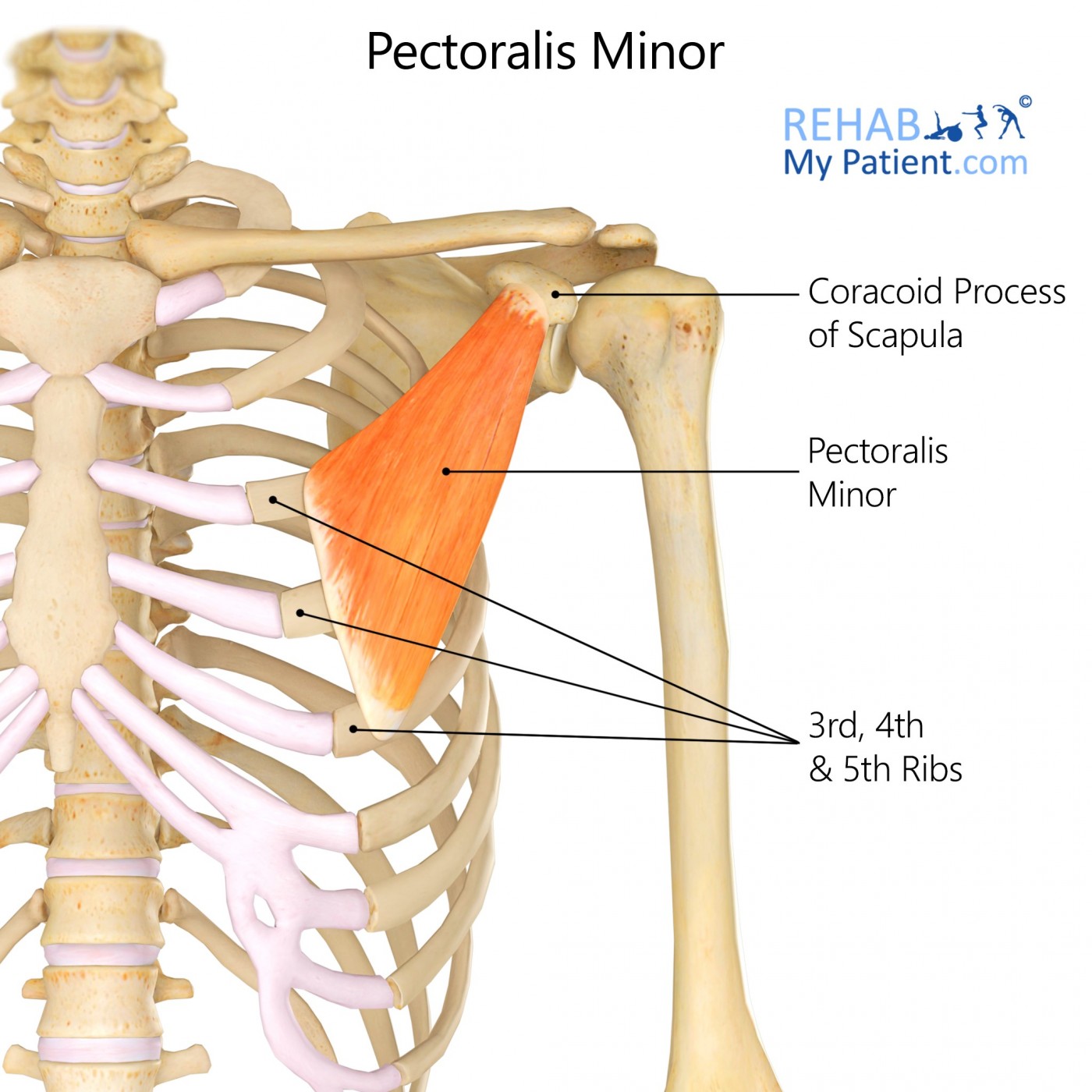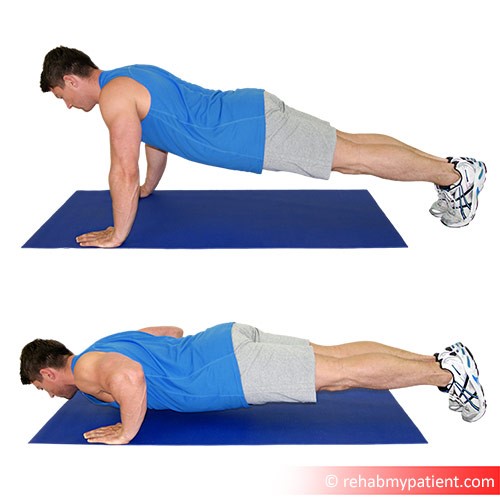Pectoralis Minor
Posted on 28th Jul 2020 / Published in: Ribs , Thoracic Spine

General information
Pectoralis minor is a skeletal muscle that pushes forward and draws down the scapula or raises the ribs. It also stabilizes the scapula during movement.
Literal meaning
Lesser breast.
Interesting information
Pectoralis minor is a thin, triangular muscle, located at the upper part of the chest, beneath the Pectoralis major. It attaches the front of the shoulder blade to ribs 3, 4, and 5, pulling the shoulder and shoulder blade down. This muscle is responsible for actions, such as pushing things away from the body and lifting with arms straight in front of the body. Injuries occur to pectoralis minor from lifting heavy objects, working at a computer, rolling shoulders forward, or carrying a heavy bag on one shoulder. A torn Pectoralis minor is often repaired by surgical means, followed by physical therapy, which includes strengthening and stretching exercises.
Origin
Anterior surfaces of the sternal ends of ribs 3, 4, and 5.
Insertion
Medial border and upper surface of coracoid process of scapula.
Function
Stabilizes scapula, drawing it anteriorly and inferiorly against thoracic wall.
Nerve supply
Medial pectoral nerve (C8, T1) from medial cord.
Blood supply
Pectoral branch of the thoracoacromial trunk.

Relevant research
Surgeons typically prefer the use of arthroscopic shoulder reconstruction to correct shoulder instability. Surgeons are now using a new procedure, the arthroscopic Latarjet procedure, which combines the benefits of both open and arthroscopic procedures. This procedure enables surgeons to better dissect around the pectoralis minor.
Lafosse, L., Lejeune, E., Bouchard, A., Kakuda, C., Gobezie, R., & Kochhar, T. (2007). The arthroscopic Latarjet procedure for the treatment of anterior shoulder instability. Arthroscopy: The Journal of Arthroscopic & Related Surgery, 23(11), 1242-e1.
Pain and paraesthesia in the upper extremities can be caused by Pectoralis Minor Syndrome (PMS). Common symptoms can include pain or tenderness below the clavicle and over the pectoralis minor tendon, upper extremity pain, paraesthesia, and weakness. Correct diagnosis of PMS keeps patients from the invasive procedure used for thoracic outlet syndrome. Treatment of PMS is a pectoralis minor tenotomy, performed as an outpatient service under local anaesthesia.
Richard J. Sanders, Neal M. Rao. (2009). The Forgotten Pectoralis Minor Syndrome: Report of 100 Operations. Journal of Vascular Surgery. 49(5), S23.
Pectoralis minor exercises
Doorway modified chest stretch
Stand in a doorway or at the end of a wall, facing perpendicular to the wall. Start with the left arm. Place front of left shoulder and inside of left arm on the surface of the wall. Position left elbow at shoulder height. Position both feet back behind original stance. Lean into wall, allowing the left shoulder to be pushed back. Turn the body to the right, away from positioned arm. Hold this position for 15 to 30 seconds. Repeat with the right arm.
Push ups
Stand with feet a little wider than shoulder-width apart. Squat down, placing hands on the floor in front of feet. Walk feet back into plank position, keep body straight and engage the abdominals. Hands should be at least three feet apart. Proper hand placement ensures an emphasis on chest muscles. Inhale, bend elbows, and lower chest until it almost reaches the floor, then exhale and raise body back into the starting position. Do three 15-repetition sets of push ups every other day.

Sign UP
Sign up for your free trial now!
Get started with Rehab My Patient today and revolutionize your exercise prescription process for effective rehabilitation.
Start Your 14-Day Free Trial